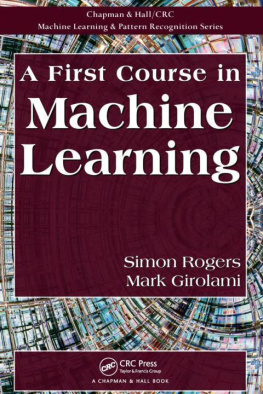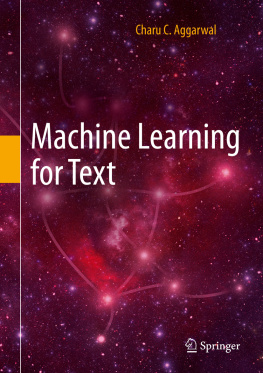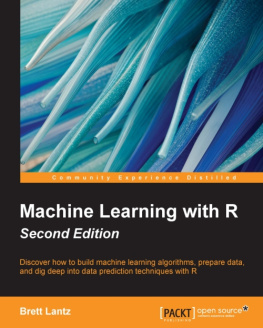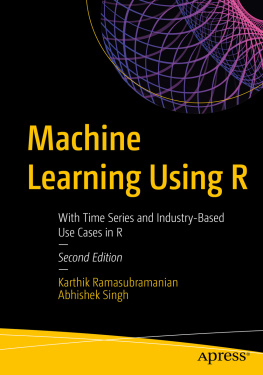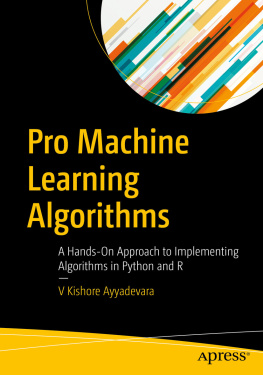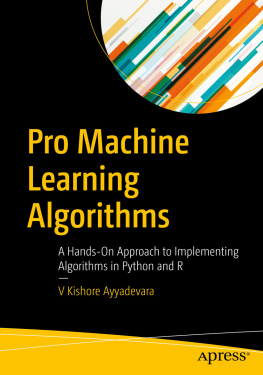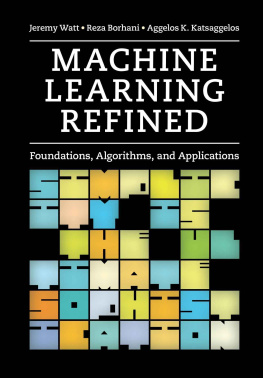Simon Rogers - A First Course in Machine Learning
Here you can read online Simon Rogers - A First Course in Machine Learning full text of the book (entire story) in english for free. Download pdf and epub, get meaning, cover and reviews about this ebook. year: 2011, publisher: CRC Press, genre: Home and family. Description of the work, (preface) as well as reviews are available. Best literature library LitArk.com created for fans of good reading and offers a wide selection of genres:
Romance novel
Science fiction
Adventure
Detective
Science
History
Home and family
Prose
Art
Politics
Computer
Non-fiction
Religion
Business
Children
Humor
Choose a favorite category and find really read worthwhile books. Enjoy immersion in the world of imagination, feel the emotions of the characters or learn something new for yourself, make an fascinating discovery.
- Book:A First Course in Machine Learning
- Author:
- Publisher:CRC Press
- Genre:
- Year:2011
- Rating:4 / 5
- Favourites:Add to favourites
- Your mark:
A First Course in Machine Learning: summary, description and annotation
We offer to read an annotation, description, summary or preface (depends on what the author of the book "A First Course in Machine Learning" wrote himself). If you haven't found the necessary information about the book — write in the comments, we will try to find it.
A First Course in Machine Learning covers the core mathematical and statistical techniques needed to understand some of the most popular machine learning algorithms. The algorithms presented span the main problem areas within machine learning: classification, clustering and projection. The text gives detailed descriptions and derivations for a small number of algorithms rather than cover many algorithms in less detail.
Referenced throughout the text and available on a supporting website (http://bit.ly/firstcourseml), an extensive collection of MATLAB/Octave scripts enables students to recreate plots that appear in the book and investigate changing model specifications and parameter values. By experimenting with the various algorithms and concepts, students see how an abstract set of equations can be used to solve real problems.
Requiring minimal mathematical prerequisites, the classroom-tested material in this text offers a concise, accessible introduction to machine learning. It provides students with the knowledge and confidence to explore the machine learning literature and research specific methods in more detail.
Simon Rogers: author's other books
Who wrote A First Course in Machine Learning? Find out the surname, the name of the author of the book and a list of all author's works by series.

